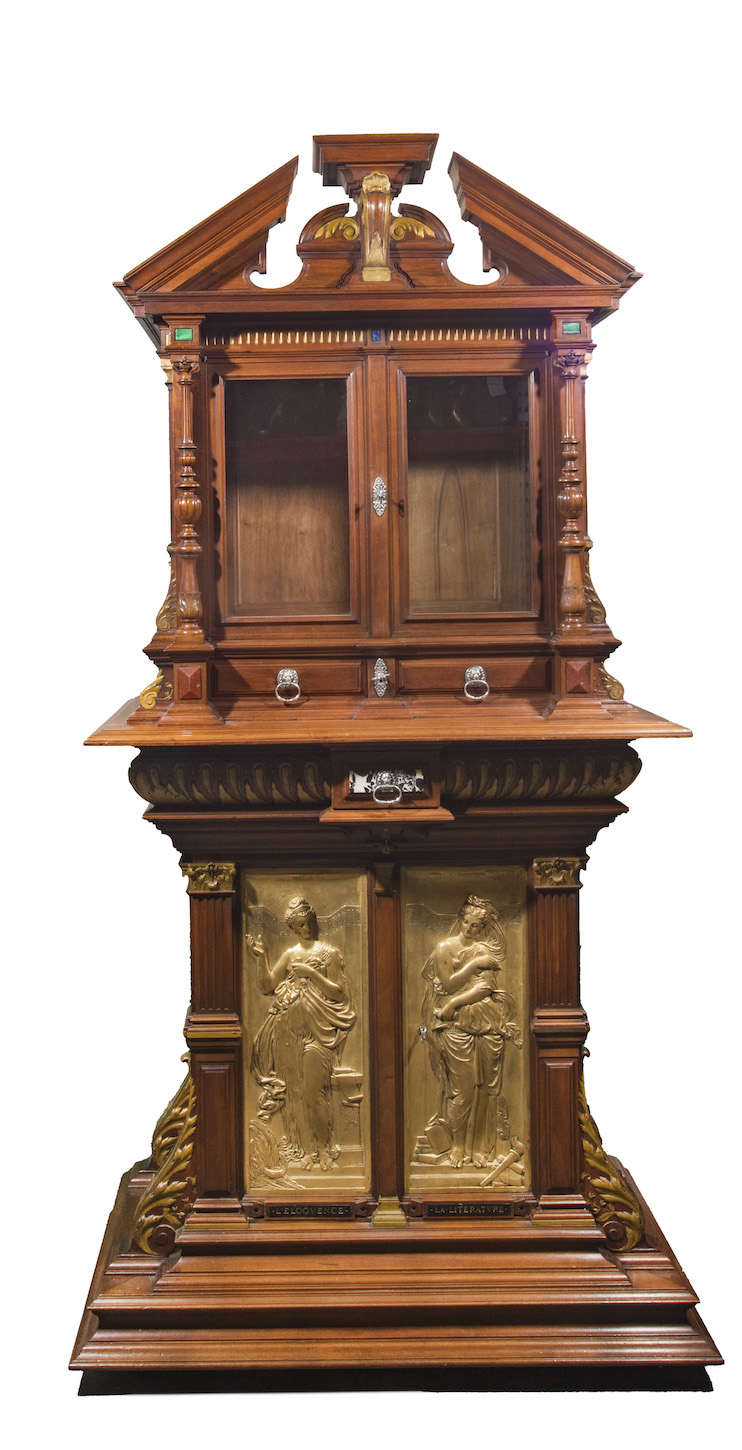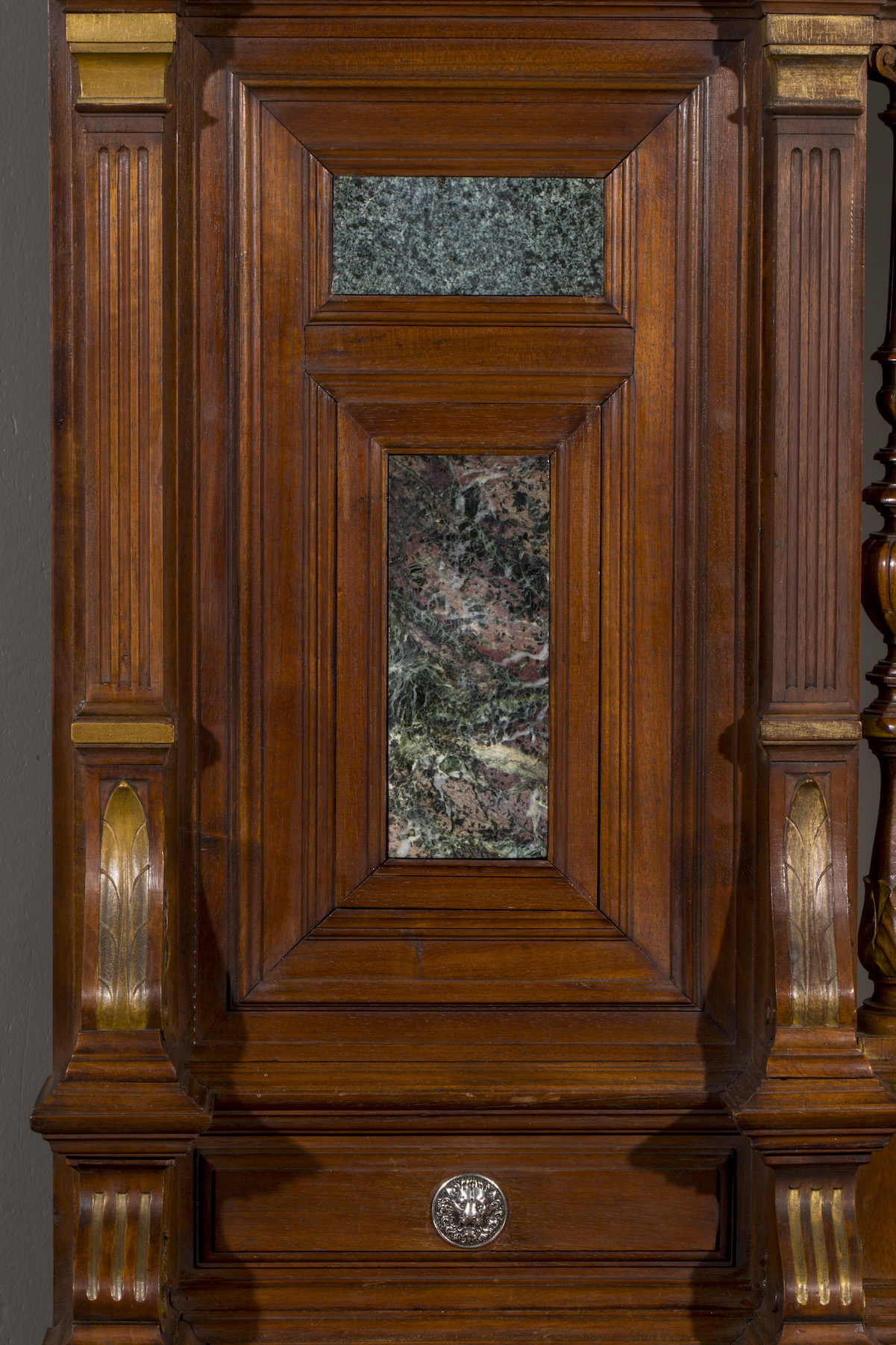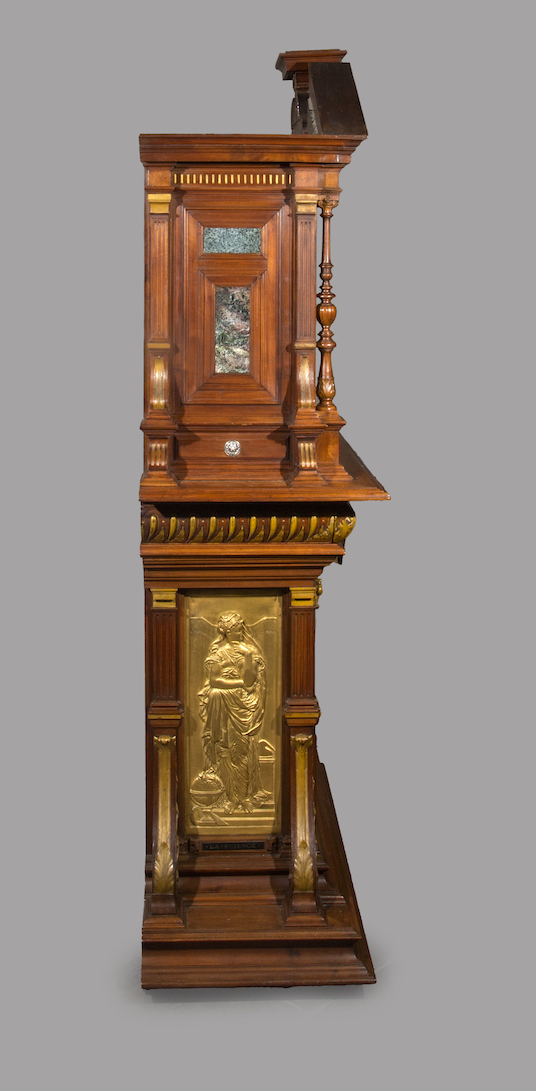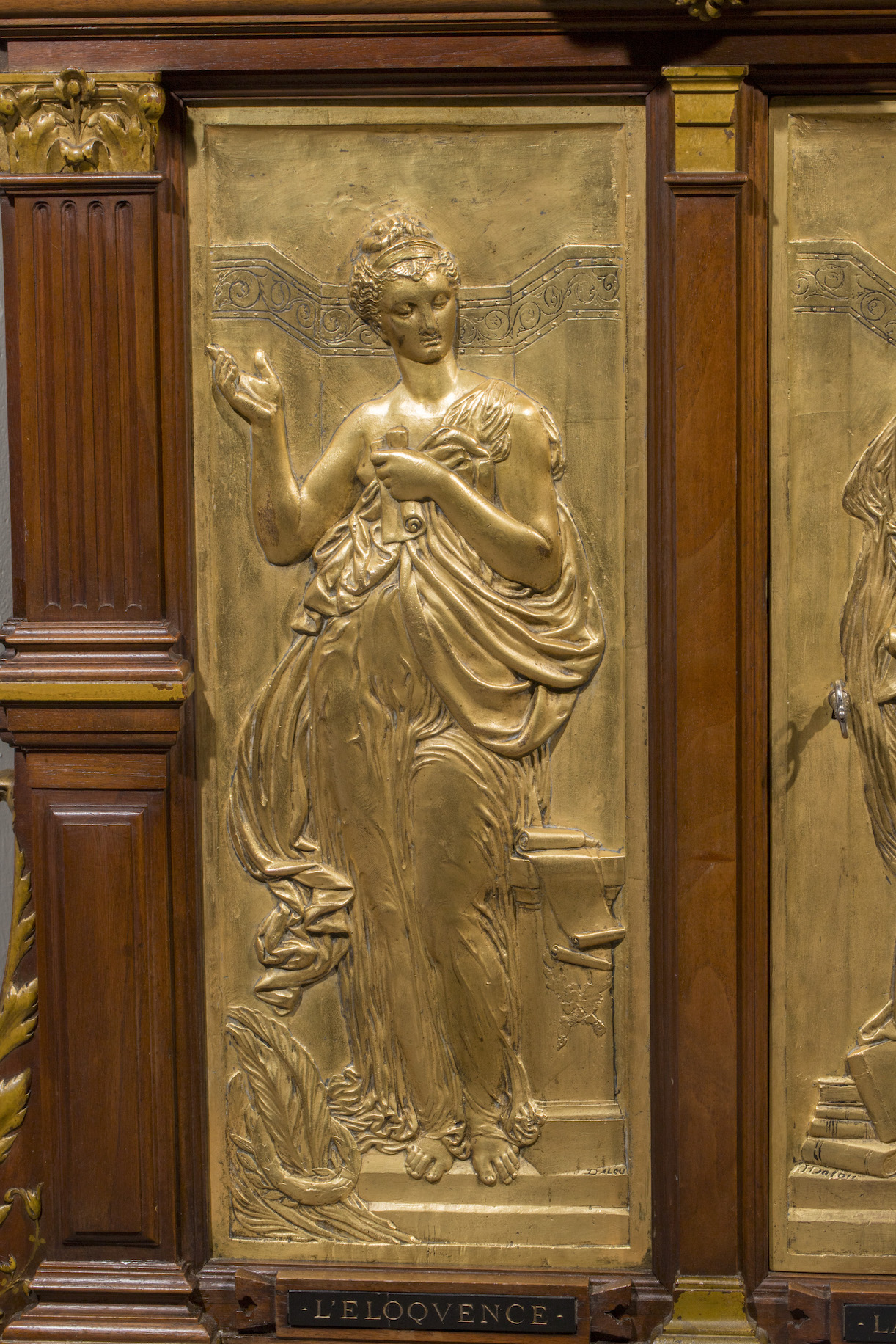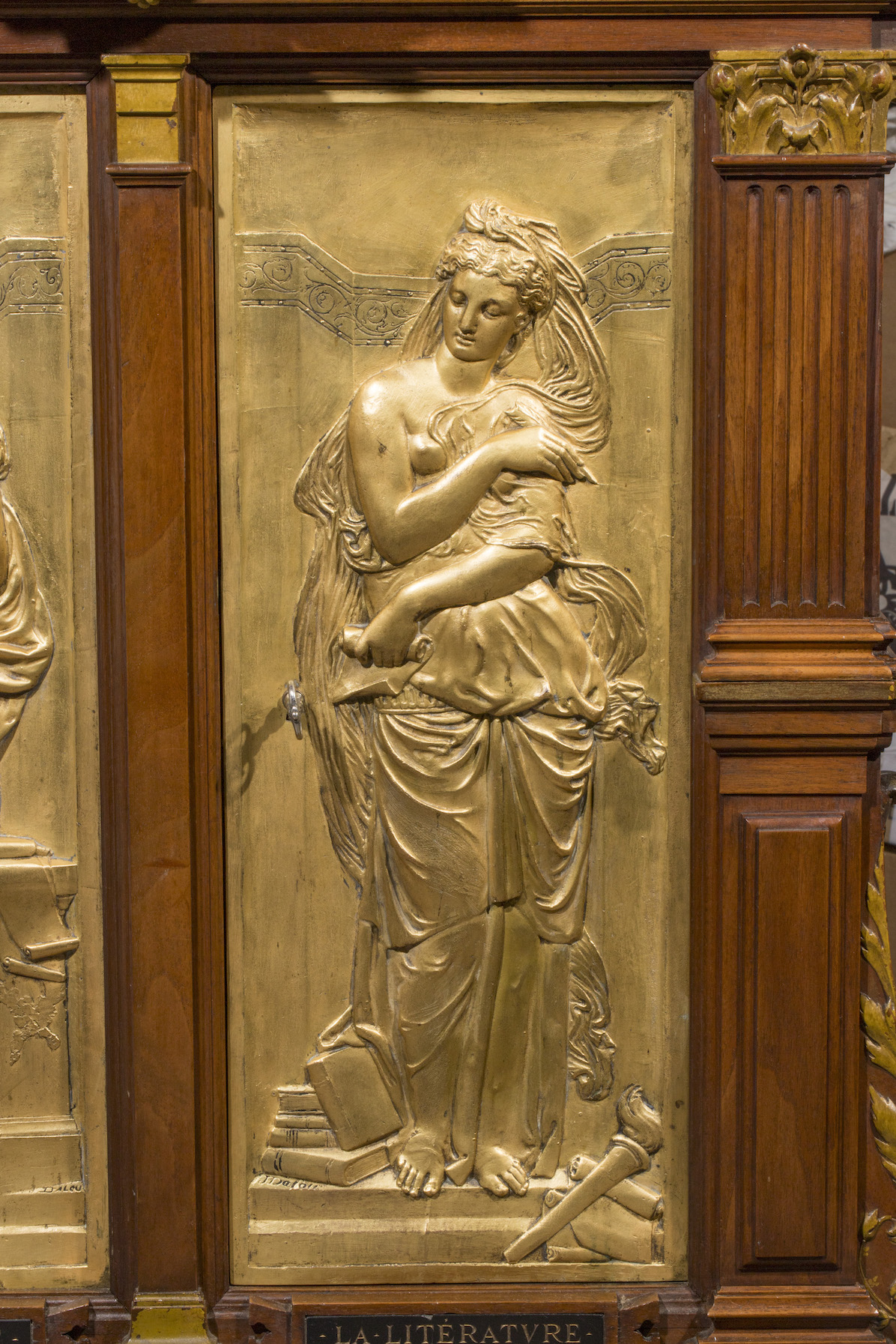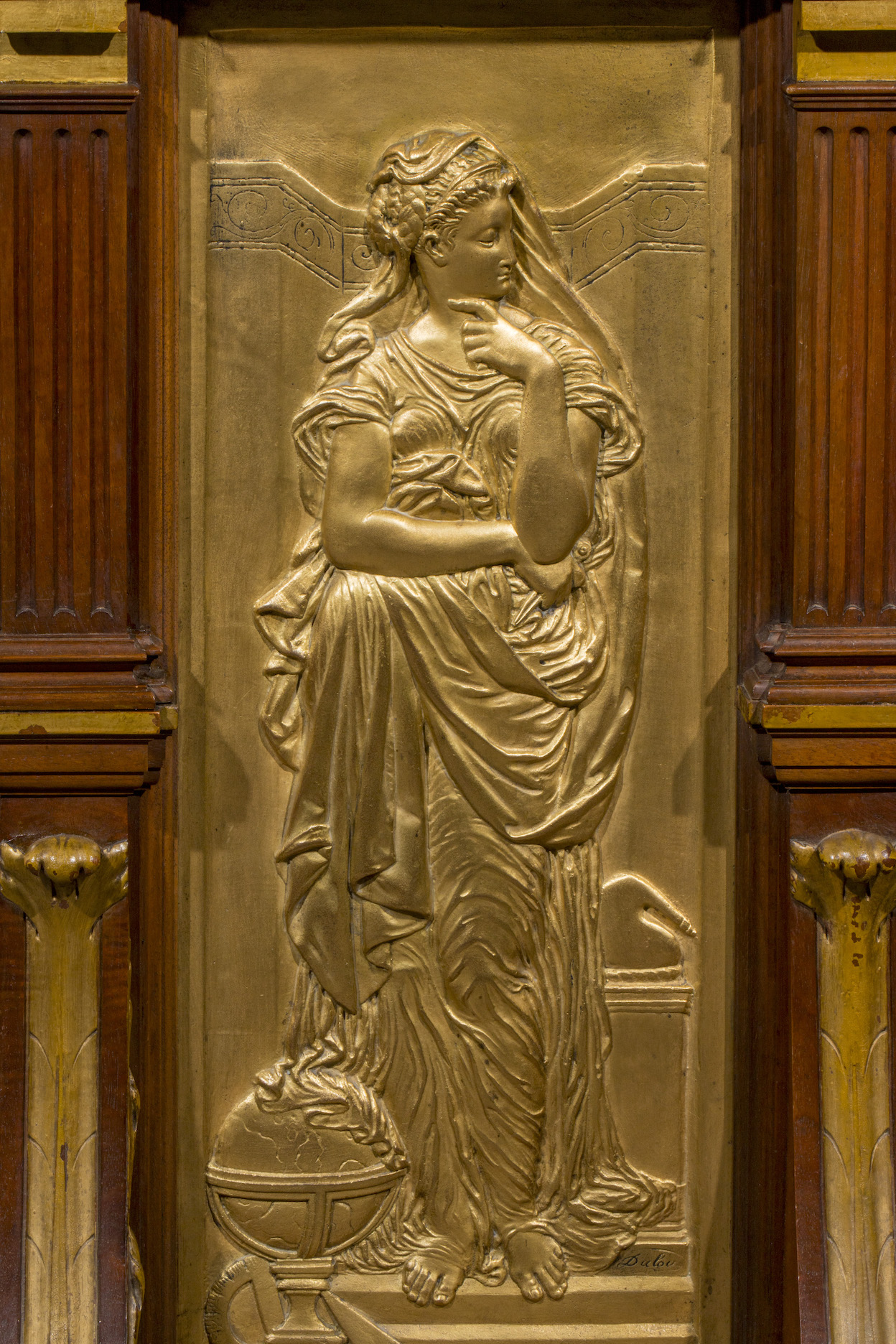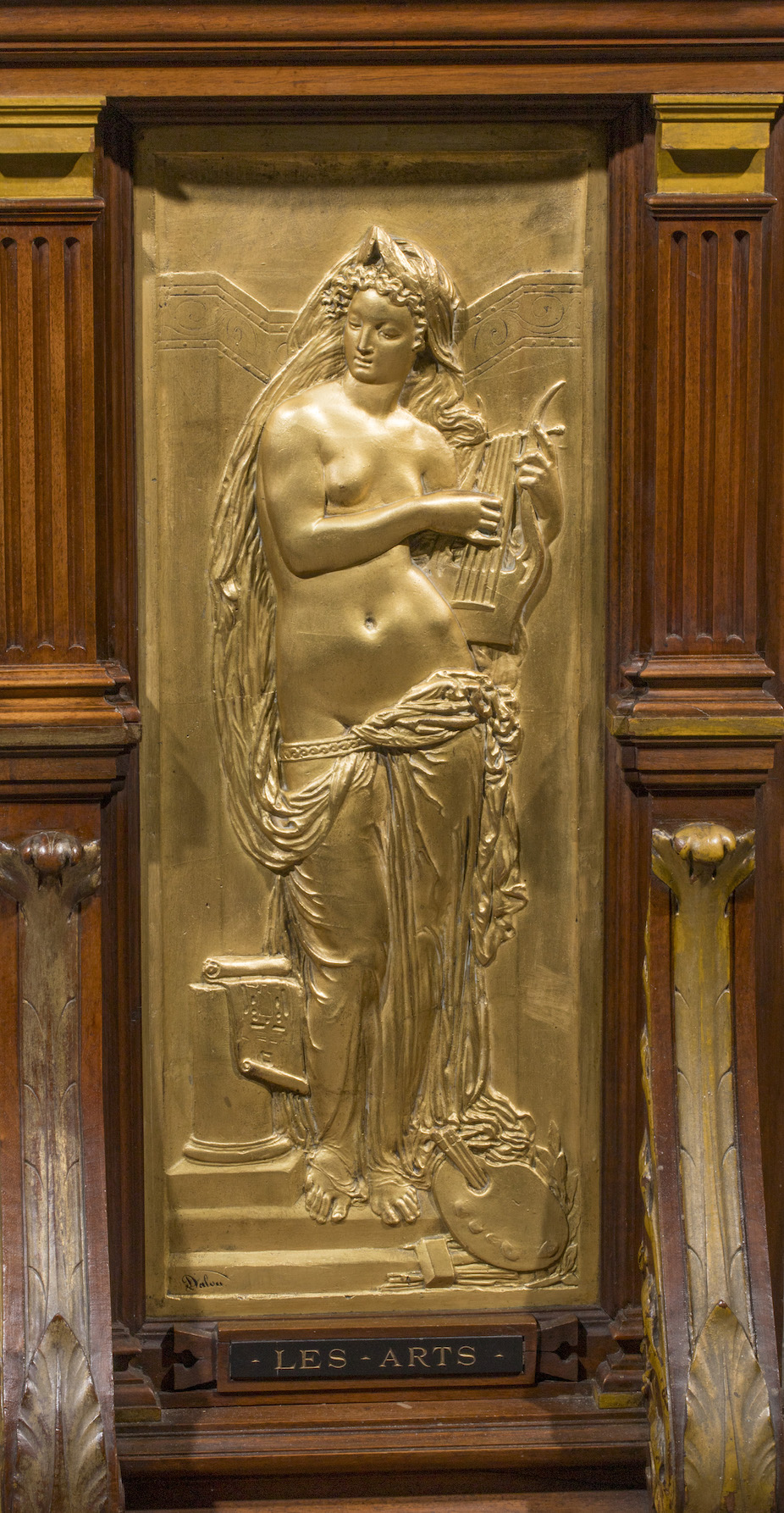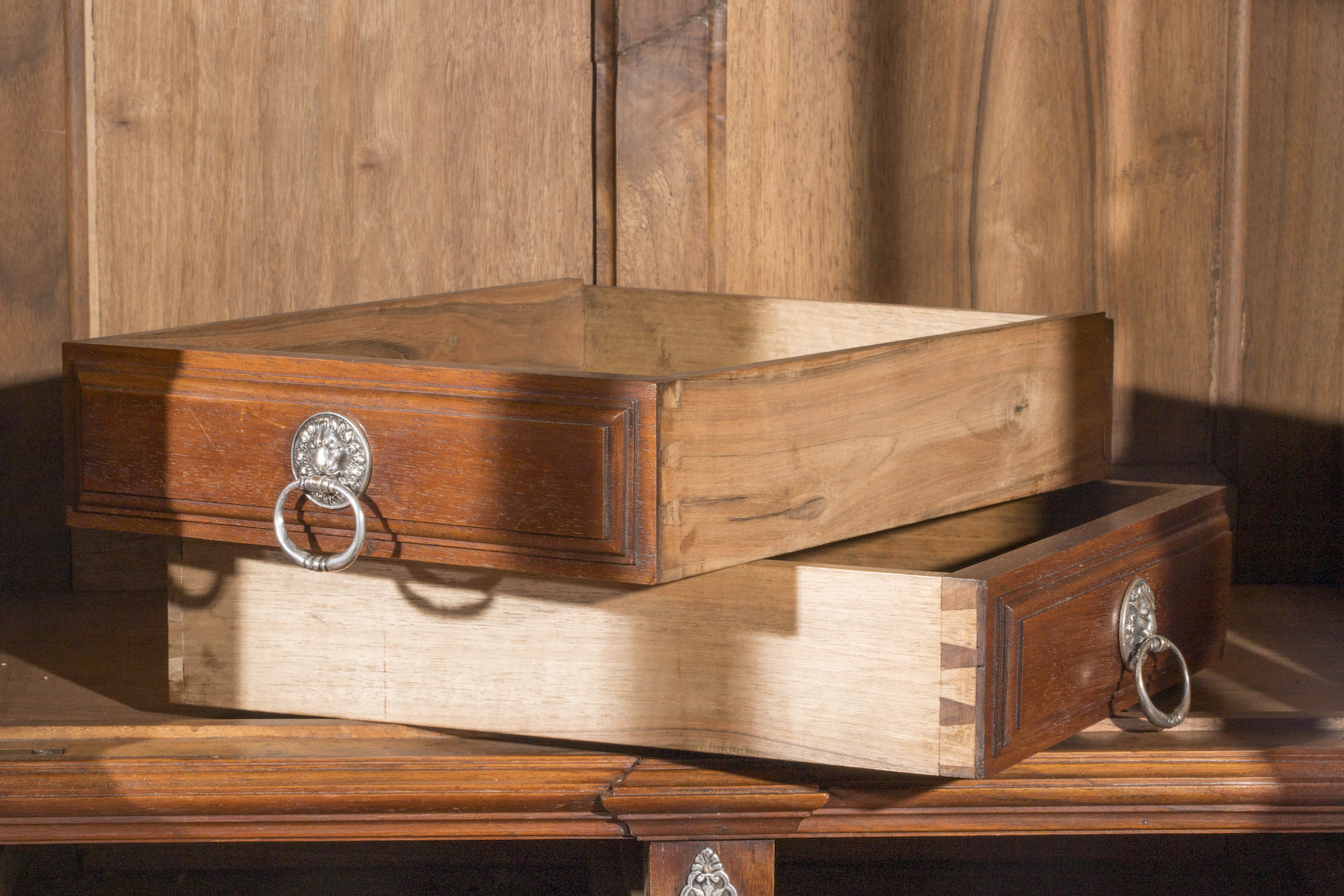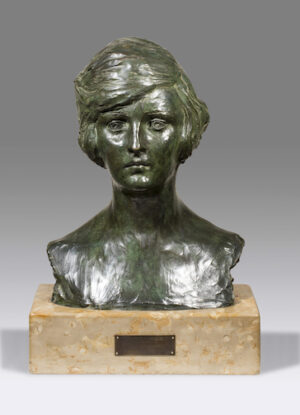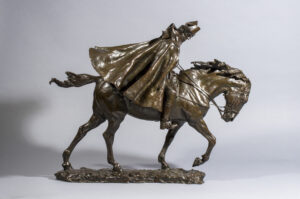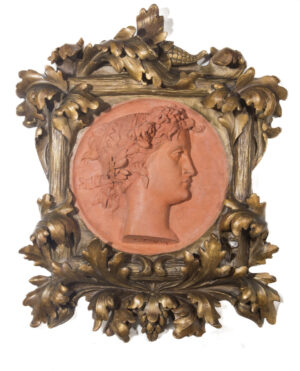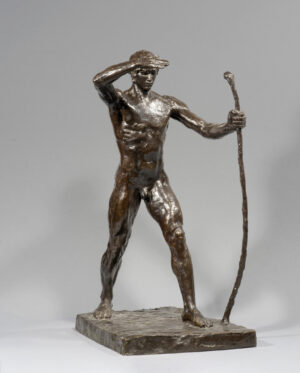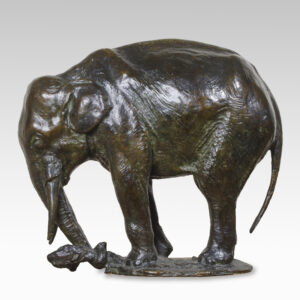Description
This elegant small walnut “cabinet deux corps”, richly carved, molded and decorated, inspired by the Henri II style, appears to correspond to the furniture conceived and designed by Pierre Manguin for the Hôtel de la Païva.
The construction of this neo-Renaissance mansion, built for and dedicated to the glory of Esther Lachmann, known as Thérèse, Marquise de Païva, one of the great courtesans of the Second Empire, began in 1856 under the direction of the architect Pierre Manguin. He made it one of the most luxurious projects of the time. Heir to Viollet-le-Duc and a collaborator of Prosper Mérimée in his capacity as an architect for Historic Monuments, Pierre Manguin drew inspiration from the Renaissance, highly appreciated in the mid-19th century, to conceive this sumptuous example of stylistic unity down to the finest details. To execute this project, he surrounded himself with many artists, including Jules Dalou.
The furniture designed for the mansion and known in part, essentially through numerous photographs taken by the architect himself, displays many similarities with our small cabinet.
Although of much more modest design and proportions, it fully replicates the architecture of a two-part cabinet in richly molded wood, adorned with carvings and colored materials, and crowned by a pediment. Among the models designed by Manguin for this mansion, four examples are known: three in ebony and one in walnut. One of them is now in the collection of the Musée des Arts Décoratifs in Paris, while another is at the Museum für Kunst und Gewerbe in Hamburg.
All these cabinets share common characteristics. Among them, it may be noted that the front uprights of the lower section are always chamfered and often associated with large foliate scrolls to further soften the corners, a treatment also found in our cabinet. Similarly, while all these two-tiered pieces are crowned with a broken pediment leaving a space for a small central shelf—sometimes topped with a statue—our cabinet displays a broken triangular pediment reminiscent of those decorating the two doors of the Comte’s library at the Hôtel de la Païva or that of a Henri II secretary cabinet photographed by Manguin in the Salon des Fournisseurs.
Other shared characteristics of these cabinets include the upper sections systematically flanked by small columns, often Corinthian, as in our piece. The design of these columns is distinguished by a candelabrum motif, a favorite of Manguin, much like the fluted pilasters on molded panels that frame the lower section of our cabinet, or the various carved brackets, scrolls, or acanthus leaves that contribute to its aesthetic refinement.
Like the furniture of the Hôtel de la Païva, our cabinet is enriched with inlaid plaques made of different marbles and semi-precious stones that set off the color of the wood and enhance the precious nature of the piece. At the Hôtel de la Païva, these elements were complemented by patinated or gilt bronze bas-relief plaques sculpted by Jules Dalou.
However, our cabinet features four bas-reliefs on the lower section, not in bronze but in galvanic copper, signed “J. Dalou” or “Dalou.” Each depicts a young woman dressed in antique costume, with fluid drapery and a treatment of the body reminiscent of Jean Goujon’s style. Each figure is represented with her attributes, grouped at the base of the composition and accompanied by a title. Thus, on the two doors, Eloquence faces Literature, while, on each side, Scienceis placed opposite to TheArts.
These four decorative plaques are variations of those commissioned in bronze by Manguin from Dalou to adorn the library doors of the Comte’s library at the Hôtel de la Païva and which remain in place to this day. They are among the earliest works that Manguin commissioned from Dalou, on the recommendation of his friend Eugène Legrain, and are among the rare works he signed for this project. He signed them with the same variation between “J. Dalou” and “Dalou” found on our piece. They can be dated to between 1864—the date of Dalou’s only dated work on the site—and 1866, when the Marquise took up residence.
The bronze plaques are rectangular in shape with a rounded top forming a shell, whereas those on our cabinet are perfectly rectangular. The removal of the rounded top alone accounts for the difference in size between the two models. The use of galvanic copper, more economical but, above all, lighter than cast bronze, proved more suitable for the doors of our piece.
The presence of these plaques signed by Dalou allows us to date our cabinet to the same period as the library doors at the Hôtel de la Païva. We know that Dalou worked intensely between 1864 and 1869, notably producing pieces for Manguin, who died in December 1869. Although our cabinet is unsigned and does not display the same level of craftsmanship as the furniture created for the mansion, it is so closely related that Manguin’s authorship can hardly be doubted.
It is therefore likely that it was commissioned before 1869 by a discerning collector, captivated by the splendor of the Hôtel de la Païva.

